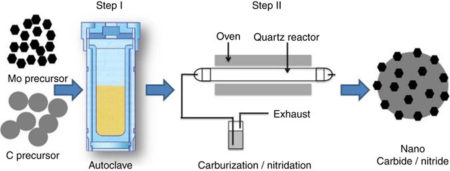Sep
7
Better Stronger Lower Cost Fuel Cells
September 7, 2017 | 9 Comments
University of Delaware (UD) scientists have created a new technology that could make fuel cells cheaper and more durable. Hydrogen-powered fuel cells are a green alternative to internal combustion engines because they produce power through electrochemical reactions, leaving no pollution behind and are far more efficient. Platinum is the most common catalyst in the type of fuel cells used in vehicles, but it’s expensive. The UD team used a novel method to come up with a less expensive catalyst that could speed up the commercialization of fuel cell vehicles.
They describe their results in a paper published in Nature Communications.
Hydrogen-powered fuel cells are a green alternative to internal combustion engines because they produce power through electrochemical reactions, leaving no pollution behind.
Materials called catalysts spur these electrochemical reactions. Platinum is the most common catalyst in the type of fuel cells used in vehicles. However, platinum is expensive – as anyone who’s shopped for jewelry knows. The metal costs around $30,000 per kilogram.

Schematic of a two-step method for the synthesis of transition metal carbide nanoparticles dispersed on a carbon material. Image Credit: University of Delaware. Click image for the largest view.
Instead, the UD team made a catalyst of tungsten carbide, which goes for around $150 per kilogram. They produced tungsten carbide nanoparticles in a novel way, much smaller and more scalable than previous methods.
Dionisios Vlachos, director of UD’s Catalysis Center for Energy Innovation said, “The material is typically made at very high temperatures, about 1,500º Celsius, and at these temperatures, it grows big and has little surface area for chemistry to take place on. Our approach is one of the first to make nanoscale material of high surface area that can be commercially relevant for catalysis.”
The researchers made tungsten carbide nanoparticles using a series of steps including hydrothermal treatment, separation, reduction, carburization and more.
Weiqing Zheng, a research associate at the Catalysis Center for Energy Innovation said, “We can isolate the individual tungsten carbide nanoparticles during the process and make a very uniform distribution of particle size.”
Next, the researchers incorporated the tungsten carbide nanoparticles into the membrane of a fuel cell. Automotive fuel cells, known as proton exchange membrane fuel cells (PEMFCs), contain a polymeric membrane. This membrane separates the cathode from the anode, which splits hydrogen (H2) into ions (protons) and delivers them to the cathode, which puts out current.
The plastic-like membrane wears down over time, especially if it undergoes too many wet/dry cycles, which can happen easily as water and heat are produced during the electrochemical reactions in fuel cells.
When tungsten carbide is incorporated into the fuel cell membrane, it humidifies the membrane at a level that optimizes performance.
Liang Wang, an associate scientist in the Department of Mechanical Engineering said, “The tungsten carbide catalyst improves the water management of fuel cells and reduces the burden of the humidification system.”
The team also found that tungsten carbide captures damaging free radicals before they can degrade the fuel cell membrane. As a result, membranes with tungsten carbide nanoparticles last longer than traditional ones.
Professor Ajay K. Prasad explained, “The low-cost catalyst we have developed can be incorporated within the membrane to improve performance and power density. As a result, the physical size of the fuel cell stack can be reduced for the same power, making it lighter and cheaper. Furthermore, our catalyst is able to deliver higher performance without sacrificing durability, which is a big improvement over similar efforts by other groups.”
The UD research team used innovative methods to test the durability of a fuel cell made with tungsten carbide. They used a scanning electron microscope and focused ion beam to obtain thin-slice images of the membrane, which they analyzed with software, rebuilding the three-dimensional structure of the membranes to determine fuel cell longevity.
The group has applied for a patent and hopes to commercialize their technology.
“This is a very good example of how different groups across departments can collaborate,” Zheng said.
The past few years have seen several breakthroughs that haven’t worked up to commercial scale. Some are still possible but the market is still small and demand is low. Perhaps this technology is the break out one. There remains the hydrogen storage matter. But hydrogen production used quickly will make a different circumstance that can be exploited. Maybe this market is closer to being ready. Perhaps this will be a trigger?
Comments
9 Comments so far


It is a good idea that people incorporate tungsten carbide into the fuel cell membrane.
Maybe this market is closer to being ready. It is great.
The group has applied for a patent and hopes to commercialize their technology. It is good news!
Perfect. Your post is helpful and easy to understand. Hoping you can share more information like this with us.
Hope these breakthroughs can work up to commercial development.
A very great study. It is also a new breakthrough in the history of human science and technology. Everyone should concentrate on technology in order to protect the environment.
Maybe the fuel cell market will get better and better in the near future.
A very good article, more people can see the news.
New energy contributes a lot to the world